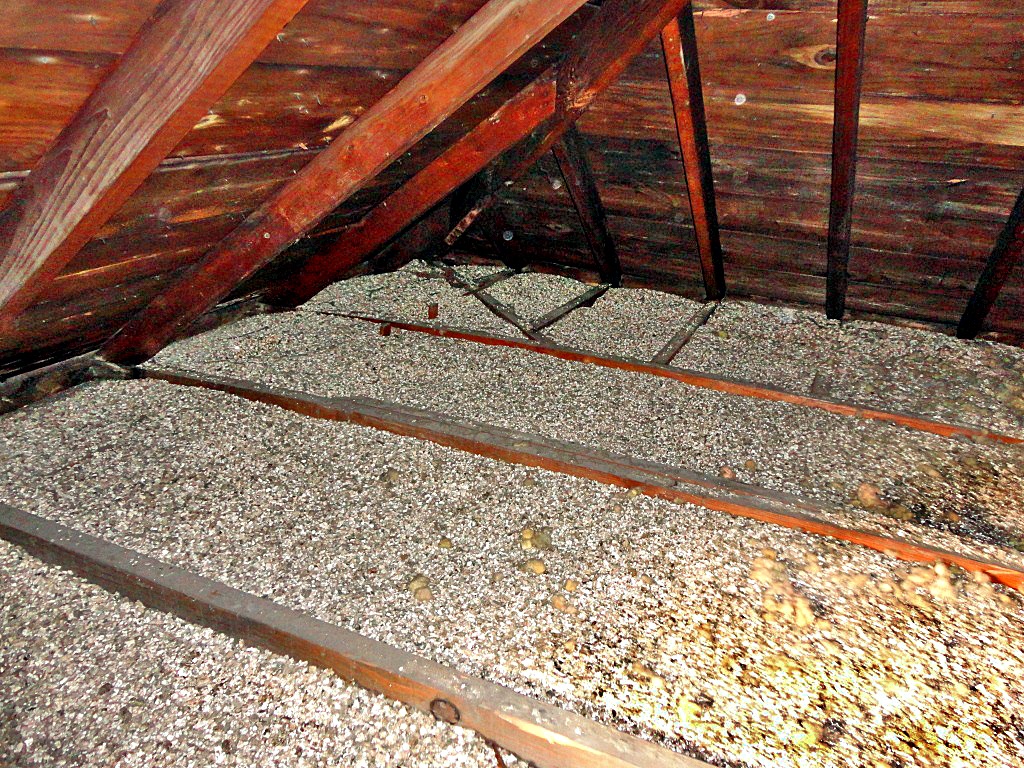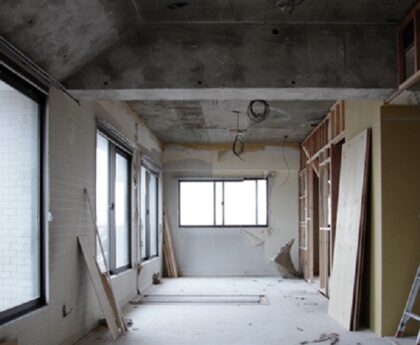Historical Use of Asbestos in Mobile Homes
Once upon a time, asbestos was the go-to material for builders, prized for its durability and resistance to heat. Back in the day, especially before the 1980s, mobile homes were no exception. Asbestos found its way into many parts of these homes, from insulation to roofing materials. This period saw asbestos being used extensively in construction, particularly in mobile homes, due to its affordability and effectiveness.
Common Asbestos-Containing Materials
In mobile homes, asbestos was commonly found in several materials:
- Ceiling and Wall Tiles: These tiles often contained asbestos-cement composites, valued for their fire-resistant qualities.
- Flooring Materials: Vinyl flooring, linoleum tiles, and even some carpet backings might have contained asbestos fibers.
- Insulation: Pipe wrap insulation and sprayed-on insulation in older mobile homes could be sources of asbestos.
It’s crucial to be aware of these materials, especially if you live in an older mobile home, as they can pose significant health risks if disturbed.
Health Risks Associated with Asbestos
Asbestos becomes a health hazard when its fibers are released into the air. These tiny fibers can be inhaled and become trapped in the lungs, leading to serious health issues over time. The main health risks include:
- Asbestosis: A chronic lung disease that causes scarring and shortness of breath.
- Lung Cancer: Asbestos exposure is a significant risk factor for lung cancer.
- Mesothelioma: This is a rare form of cancer that affects the lining of the lungs, chest, or abdomen.
Understanding these risks is essential for anyone living in or considering purchasing an older mobile home. If you suspect asbestos in your home, it’s vital to recognize potential asbestos and take appropriate action to ensure it is safely tested and removed.
Health Implications of Asbestos Exposure
Asbestosis and Its Symptoms
Asbestosis is a serious lung condition that arises from inhaling asbestos fibers. These tiny fibers can cause scarring in the lung tissue, leading to symptoms like shortness of breath, a persistent cough, and chest pain. Over time, asbestosis can severely impair lung function, making it difficult for individuals to breathe normally. Early detection and management are crucial to slow the progression of this disease. Regular health check-ups and imaging tests can help in monitoring any changes in lung health.
Lung Cancer Risks
Exposure to asbestos significantly increases the risk of developing lung cancer. This risk is further heightened for individuals who smoke. Asbestos fibers can cause changes in lung cells, potentially leading to cancerous growths. Symptoms of lung cancer may include persistent coughing, unexplained weight loss, and coughing up blood. It’s important for individuals who have been exposed to asbestos to be vigilant about these symptoms and seek medical advice promptly.
Mesothelioma: A Rare Cancer
Mesothelioma is a rare but aggressive form of cancer primarily caused by asbestos exposure. It affects the lining of the lungs, abdomen, or heart. The latency period for mesothelioma is notably long, often taking decades to manifest after initial exposure. Symptoms can include chest pain, abdominal swelling, and difficulty breathing. Given its aggressive nature, early diagnosis is essential for better treatment outcomes. Unfortunately, mesothelioma remains a challenging cancer to treat, with research ongoing to find more effective therapies. The risk of developing mesothelioma increases with the amount of asbestos inhaled, emphasizing the importance of minimizing exposure.
Identifying Asbestos in Your Mobile Home
Signs of Asbestos Presence
Identifying asbestos in your mobile home isn’t straightforward. You can’t just look at a material and know for sure if it contains asbestos. However, there are some signs that might suggest its presence. If your mobile home was built before 1980, there’s a higher chance it contains asbestos. Pay attention to materials that are worn or damaged, as they might be more likely to release asbestos fibers.
Professional Asbestos Testing
The only way to confirm the presence of asbestos is through professional testing. Consider collecting samples and sending them to a certified testing facility. Professionals have the right equipment and expertise to safely handle and test suspected materials. Using a test kit can also be a safe and cost-effective way to check for asbestos in your home.
Visual Clues to Look For
While you can’t rely solely on sight to identify asbestos, some visual clues can help. Look for older materials like ceiling tiles, floor tiles, or insulation that appear brittle or crumbling. These might be potential asbestos hazards, especially if your home is older. Keep an eye on areas that are more prone to wear and tear, as they might release asbestos fibers more easily.
Common Locations of Asbestos in Mobile Homes
Ceiling and Wall Tiles
In many older mobile homes, ceiling and wall tiles were crafted using asbestos-cement composites. These materials were favored for their durability and fire-resistant properties. Asbestos was often mixed with cement to create tiles that were both strong and safe from fire hazards. However, when these tiles are disturbed, such as during renovations or repairs, they can release harmful asbestos fibers into the air.
Flooring Materials
Flooring materials in mobile homes, especially those built before the 1980s, often contained asbestos. This includes vinyl flooring, linoleum tiles, and even some carpet backings. Asbestos floor tiles were particularly common in areas with high foot traffic due to their toughness. If these floors become worn or damaged, they pose a risk as they can emit asbestos fibers.
Insulation and Pipe Wraps
Insulation is another common location for asbestos in mobile homes. Asbestos was widely used in pipe wrap insulation to prevent heat loss and provide fire protection. It was also used in sprayed-on insulation in attics and walls. If the insulation is intact, it may not pose a risk, but once it starts to degrade or is disturbed, it becomes a significant health concern. Mobile home owners should be cautious and consider professional testing if they suspect asbestos in their insulation.
Safety Measures for Suspected Asbestos
Avoiding Disturbance of Materials
When dealing with suspected asbestos in a mobile home, it’s essential never to disturb the materials. Fibers can become airborne if the asbestos is damaged or moved, posing a serious health risk. Homeowners should:
- Refrain from sanding, drilling, or cutting materials that might contain asbestos.
- Avoid using vacuums or brooms on suspect materials, as this can release fibers into the air.
- Gently spray suspected materials with water to prevent fiber release until a professional can inspect.
Limiting Access to Affected Areas
To minimize exposure, limit access to areas where asbestos is suspected. This helps to reduce the risk of disturbing the materials. Consider:
- Keeping children and pets away from potentially contaminated areas.
- Closing off rooms or sections of the home where asbestos is suspected.
- Using signage to alert family members and visitors of the potential hazard.
Seeking Professional Inspection
Professional inspection is a critical step in managing asbestos risks. Only a certified inspector can confirm the presence of asbestos and recommend appropriate actions. Homeowners should:
- Contact a licensed asbestos inspector to assess the situation.
- Avoid using home testing kits, as they can be inaccurate and dangerous.
- Follow the inspector’s advice on whether to remove or encapsulate the asbestos materials.
In summary, handling suspected asbestos requires caution and professional intervention. By following these safety measures, homeowners can help protect their health and that of their families.
Legal and Regulatory Aspects of Asbestos
EPA Guidelines on Asbestos
The Environmental Protection Agency (EPA) has been at the forefront of regulating asbestos to safeguard public health. Over the years, they’ve implemented various rules to curb asbestos exposure. One of the key regulations is the National Emission Standards for Hazardous Air Pollutants (NESHAP), which focuses on minimizing airborne contaminants like asbestos during construction activities. This regulation is crucial for ensuring that asbestos fibers do not become airborne, especially during renovations or demolitions.
In April 2019, a final rule was enacted to protect the public from asbestos by prohibiting its uses that are no longer available in the market and not regulated by other laws. This rule highlights the EPA’s commitment to phasing out asbestos in environments where it is not necessary.
State Regulations for Mobile Homes
While federal guidelines provide a framework, individual states have their own regulations concerning asbestos. These can vary significantly, affecting how asbestos is managed in mobile homes. Some states might have more stringent disposal requirements or specific mandates for testing and abatement in residential settings. It’s important for mobile home owners to familiarize themselves with their state’s specific regulations to ensure compliance and safety.
Legal Recourse for Asbestos Exposure
For those affected by asbestos exposure, legal options are available. Victims can pursue compensation through lawsuits if they can demonstrate negligence on the part of manufacturers or employers. These cases often revolve around proving that a company knew about the dangers of asbestos but failed to protect its workers or consumers. Legal recourse not only offers financial compensation but also encourages stricter adherence to safety standards in industries that still deal with asbestos-containing materials.
Understanding these legal and regulatory aspects is vital for anyone living in or managing mobile homes, as it helps in taking informed steps to mitigate asbestos risks.
Professional Asbestos Abatement
Choosing a Certified Contractor
When it comes to dealing with asbestos, hiring a certified contractor is a must. These professionals have the necessary training and knowledge to safely manage and remove asbestos-containing materials. Selecting a qualified contractor ensures that the job is done safely and in compliance with all regulations. It’s crucial to verify their credentials and check for any state-specific licensing requirements. For instance, those in Florida should contact the Florida Department of Business and Professional Regulation’s Asbestos Licensing Unit for inquiries related to licensing in the asbestos industry.
Steps in the Abatement Process
The abatement process is methodical and involves several key steps:
- Inspection and Testing: A thorough inspection is conducted to identify asbestos presence. Testing is essential to confirm the type and extent of asbestos materials.
- Containment: The area is sealed off to prevent asbestos fibers from spreading. This step is crucial to ensure safety during removal.
- Removal or Encapsulation: Depending on the situation, asbestos materials are either removed or encapsulated. Encapsulation involves sealing the asbestos to prevent fibers from becoming airborne.
- Disposal: Proper disposal of asbestos materials is vital. Contractors follow strict protocols to dispose of asbestos safely and legally.
Cost Considerations for Removal
The cost of asbestos removal can vary significantly based on several factors, including the size of the area, the amount of asbestos present, and the complexity of the job. On average, basic asbestos testing might cost around $600, but comprehensive tests and removal processes can be more expensive. It’s important to consider these costs in light of the health risks associated with asbestos exposure. Abatement of asbestos-containing materials and lead-based paint is governed by a range of federal, state, and local laws and regulations, ensuring safe and compliant removal practices.
Living Safely in Older Mobile Homes
Maintaining Good Ventilation
Ensuring good ventilation in an older mobile home is essential for maintaining a healthy living environment. Regularly opening windows and doors helps circulate fresh air and reduce the accumulation of indoor pollutants. Proper ventilation can also help mitigate any potential risks associated with asbestos fibers, should they be present. Using exhaust fans in kitchens and bathrooms can further enhance air circulation, reducing humidity levels that might contribute to the deterioration of asbestos-containing materials.
Regular Inspections and Maintenance
Consistent inspections and maintenance are crucial for safely living in older mobile homes. Homeowners should schedule routine checks, especially if they plan to undertake renovations. Hiring a certified inspector to assess the presence of asbestos before starting any work can prevent accidental exposure. Regular maintenance tasks, such as fixing leaks or repairing damaged areas, should be performed carefully to avoid disturbing any asbestos materials.
Precautions During Renovations
Renovating an older mobile home requires special precautions to prevent asbestos exposure. Before beginning any renovation project, it’s advisable to consult with professionals who can identify potential asbestos-containing materials. Avoiding DIY removal of suspect materials is vital, as disturbing them can release harmful fibers into the air. Instead, hire licensed asbestos abatement professionals to safely handle and remove any hazardous materials. By taking these precautions, homeowners can ensure a safer renovation process and a healthier living environment.
The Future of Asbestos in Mobile Homes
Advancements in Asbestos Alternatives
The construction industry has been actively seeking alternatives to asbestos for years, driven by health concerns and regulatory pressures. New materials are being developed that offer similar benefits without the associated risks. For instance, cellulose fibers and thermoset plastic flour are being explored as safer substitutes. These materials provide the same durability and fire resistance that made asbestos a popular choice in the past. As technology progresses, the availability and affordability of these alternatives are expected to increase, making them more accessible for mobile home construction.
Ongoing Research and Developments
Research into asbestos and its alternatives is ongoing, with scientists and engineers exploring innovative ways to safely replace asbestos in existing structures. Current studies focus on improving the effectiveness and cost-efficiency of asbestos removal and management. Additionally, there is a push towards developing non-toxic materials that can be easily integrated into current building practices. This research is crucial, as it not only addresses safety concerns but also paves the way for more sustainable construction practices.
Impact of New Regulations
Regulations surrounding asbestos use and removal continue to evolve. OSHA’s guidelines indicate that buildings constructed after January 1981 are generally less likely to contain asbestos. However, this does not guarantee the absence of asbestos, highlighting the need for continued vigilance and testing. As legislation becomes stricter, manufacturers and contractors are compelled to adopt safer practices and materials. These changes are critical in reducing the health risks associated with asbestos exposure and ensuring safer living environments in mobile homes.
What to Do If You Suspect Asbestos
Immediate Steps to Take
If you think there’s asbestos in your mobile home, the first thing to do is not to panic. Stay calm and avoid touching or disturbing any materials you suspect might contain asbestos. Asbestos is only dangerous when its fibers become airborne and can be inhaled. Here’s what you should do right away:
- Leave the materials undisturbed: Don’t try to remove, repair, or even touch them. Asbestos fibers are dangerous when they become airborne.
- Limit access to the area: Keep children and pets away from the suspected area to minimize any risk of exposure.
- Turn off fans and heating/cooling systems: This helps prevent the spread of any potentially airborne fibers.
Contacting Professionals
Once you’ve secured the area, it’s crucial to contact a professional. A certified asbestos inspector can assess the situation. They have the tools and knowledge to safely inspect and test materials without causing further contamination. Remember, asbestos exposure can pose serious health risks, so professional help is vital.
- Hire a certified asbestos inspector: They can take samples and confirm if asbestos is present.
- Consider professional abatement: If asbestos is found, a licensed contractor can safely remove or encapsulate the material.
- Discuss insurance coverage: Check if your insurance covers asbestos testing and removal.
Understanding the Abatement Process
If asbestos is confirmed, understanding the abatement process can ease your mind. Here’s a basic outline of what to expect:
- Assessment and Planning: The contractor will evaluate the extent of the asbestos and plan the abatement process.
- Containment of the Area: To prevent fibers from escaping, the area will be sealed off.
- Removal or Encapsulation: Depending on the situation, materials will either be removed or sealed.
- Final Inspection and Air Testing: After removal, the area is inspected and tested to ensure it’s safe.
Taking these steps seriously can protect your health and ensure your home remains a safe place to live.
Primary References





